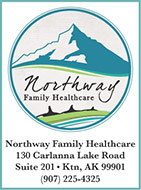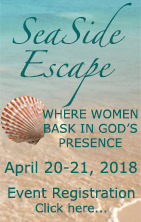|
Fish Factor Lower fish prices & quotas mean less income coming into coastal economies this yearBy LAINE WELCH
March 31, 2018
Coming on the heels of an 80 percent crash of cod stocks in the Gulf of Alaska and a 10 percent decline in halibut catches, state fishery managers are projecting a 2018 salmon harvest at 149 million fish, down 34 percent from last season. The shortfall stems from lower forecasts for returning pink salmon. The Alaska Department of Fish and Game is forecasting a humpie harvest of just 70 million fish, down by more than half from last summer. For sockeye salmon, a statewide catch of about 52 million is down 1.8 million fish from 2017, which was the 5th largest red salmon harvest since 1970. By far, most of the sockeyes will come from Bristol Bay’s nine river systems where a projected harvest of 37.5 million would be down by more than a million, still well above the 10 and 20 year averages for the Bay. Alaska’s chum salmon catch last year of 25 million also was the largest haul since 1970. This year’s statewide catch is expected to produce 21 million chums, down by nearly four million. The 2018 coho catch is pegged at 5.8 million, nearly 600,000 more silvers than last season. For Chinook salmon, the forecast calls for a catch of 99,000 kings in areas outside of Southeast Alaska, where the numbers are determined by treaty with Canada. Declining stocks have forced fishery managers to impose tough restrictions on Chinook catches for all users. Alaska’s salmon season officially gets underway in mid-May when sockeye and king salmon return to the Copper River near Cordova. That’s followed by commercial openers across the state from Ketchikan to as far north as Kotzebue. Alaska’s 2017 harvest of 224 million salmon was valued at nearly $680 million at the docks. Find a summary of the 2017 season and outlooks for 2018 at the Alaska Dept. of Fish and Game website. Halibut tanks: As feared, prices for halibut sank like a stone as the season’s first fresh fish crossed the Alaska docks last week. The fishery opened on March 24 and traditionally, the first landings fetch high prices and then drop as the market settles out. That’s not the case this year. Prices started at $4.50 to $5 a pound at major ports – roughly $2 lower than fishermen have received in recent years. At Kodiak, for example, one major buyer paid $4.50/lb for first deliveries and the price dropped to $4.25 the next day. Seward starting prices were reported at $4.50-$4.75-$5.00 based on fish weights. Yakutat was paying the highest price at $5.25 across the board. “The market is really lackluster and buying is on spot,” said one Kodiak processor, meaning purchases and payments are made immediately rather than on longer term contracts. The push back to escalating Pacific halibut prices began last October when payouts to fishermen tumbled for the first time in four years. Buyer resistance was bad enough to force some Alaska processors to turn away deliveries, or buy only from their long-term boats. One wholesale buyer commented: “Who in their right mind is going to pay $30 or more for a pound of fish?” Adding to the market snub momentum – reports of up to 10 million of pounds of fresh, less pricey Atlantic halibut coming into the U.S. from eastern Canada. The close proximity of that fresh fish to the eastern seaboard has cut into Alaska’s share of those customers, and the Canadian fish already is making inroads heading west. In 2005 Atlantic halibut accounted for just four percent of the total North American halibut harvest, said economist Andy Wink of Wink Research. Since then, Pacific halibut harvests have declined by 63 percent while Atlantic harvests have increased 195 percent and imports to the U.S. have nearly tripled. Another headwind for Alaska fishermen as the halibut season gets underway –hefty hold-overs of halibut reportedly remain in freezers from last season. A fleet of about 2,000 Alaskans fish commercially for halibut each year from Southeast to the Bering Sea. The average price paid to fishermen in 2017 was $6.32 per pound with a fishery value of $112 million at the docks. The Alaska halibut catch limit for 2018 is 17.5 million pounds; the fishery runs through November 7. Fish bucks for all: The lower fish catches and/or prices should concern all Alaskans, even if they live far from the coast. Fishery landing taxes, which are based on dock prices, are split evenly between the port where the fish is delivered and the state’s general fund, to be distributed at the whim of the Legislature. With Alaska’s commercial catches on the order of 5 to 6 billion pounds per year, adding just one penny per pound makes a difference of nearly one million dollars in landing taxes for the state and local governments each. “While the tax implications are important,” Wink said, “the greater issue is that lower prices and lower quotas mean less income coming into coastal economies this year.” Fish map: Are you considering your options for diversifying more fisheries? A new interactive mapfrom Alaska Sea Grant lets you search 183 commercial fisheries across the state. “You can sort it by region, by species, and by gear type,” said Sunny Rice, a Sea Grant agent at Petersburg. “As you put in these limiting factors and hit Go, the icons will pop up representing those fisheries.” Fisheries also can be sorted by limited entry, quota shares, open access and other categories. The fishing map came about, Rice said, from frequent comments at the Young Fishermen’s Summits. “People would say ‘I didn’t realize there was this kind of fishery in that part of the state,’ or ‘I didn’t even know that there were other people fishing Dungeness crab in other regions.’ Or, ‘what are my options for moving into additional fisheries when I don’t even know what fisheries are out there,’” Rice explained. The map is an ongoing collaboration with Sea Grant agents across the state and United Fishermen of Alaska, and is aimed primarily at new fishing entrants or those who want to grow their operations. “Maybe you already are fishing a certain species and you didn’t realize there was a possibility of fishing that at another place. Or you already have the gear to do one fishery and maybe you could use that gear somewhere else. You can sort it in those ways,” she added. The map, which is part of Sea Grant’s popular Fish Biz tool kit, also provides links to money matters, such as permit costs and fishery earnings from the Commercial Fisheries Entry Commission. “If you’re really considering getting into a fishery, you can look back into the quartile tables and find out what people in that fishery have earned in the past,” Rice said. The map is a good start, she added, but the best go-to place for answers is local fishery managers. “If fishermen are serious about considering a new fishery, call the manager for that area,” Rice advises. “Those guys are very available and can answer all your questions.” Feedback on the fishing map is encouraged. Contact Rice at sunny.rice@alaska.edu Fish call: The Alaska Board of Fisheries is calling for proposals for suggested changes in the subsistence, personal use, sport, guided sport, and commercial fishing regulations for Bristol Bay, Arctic-Yukon-Kuskokwim, Alaska Peninsula, Aleutian Islands, Chignik, and statewide finfish general provisions. Deadline to submit proposals is April 10. Proposal forms are available at the Boards Support website and may be mailed to Juneau or submitted online or via email at dfg.bof.comments@alaska.gov
Representations of fact and opinions in comments posted below are solely those of the individual posters and do not represent the opinions of Sitnews.
SitNews ©2018 Stories In The News Ketchikan, Alaska
|
||||








